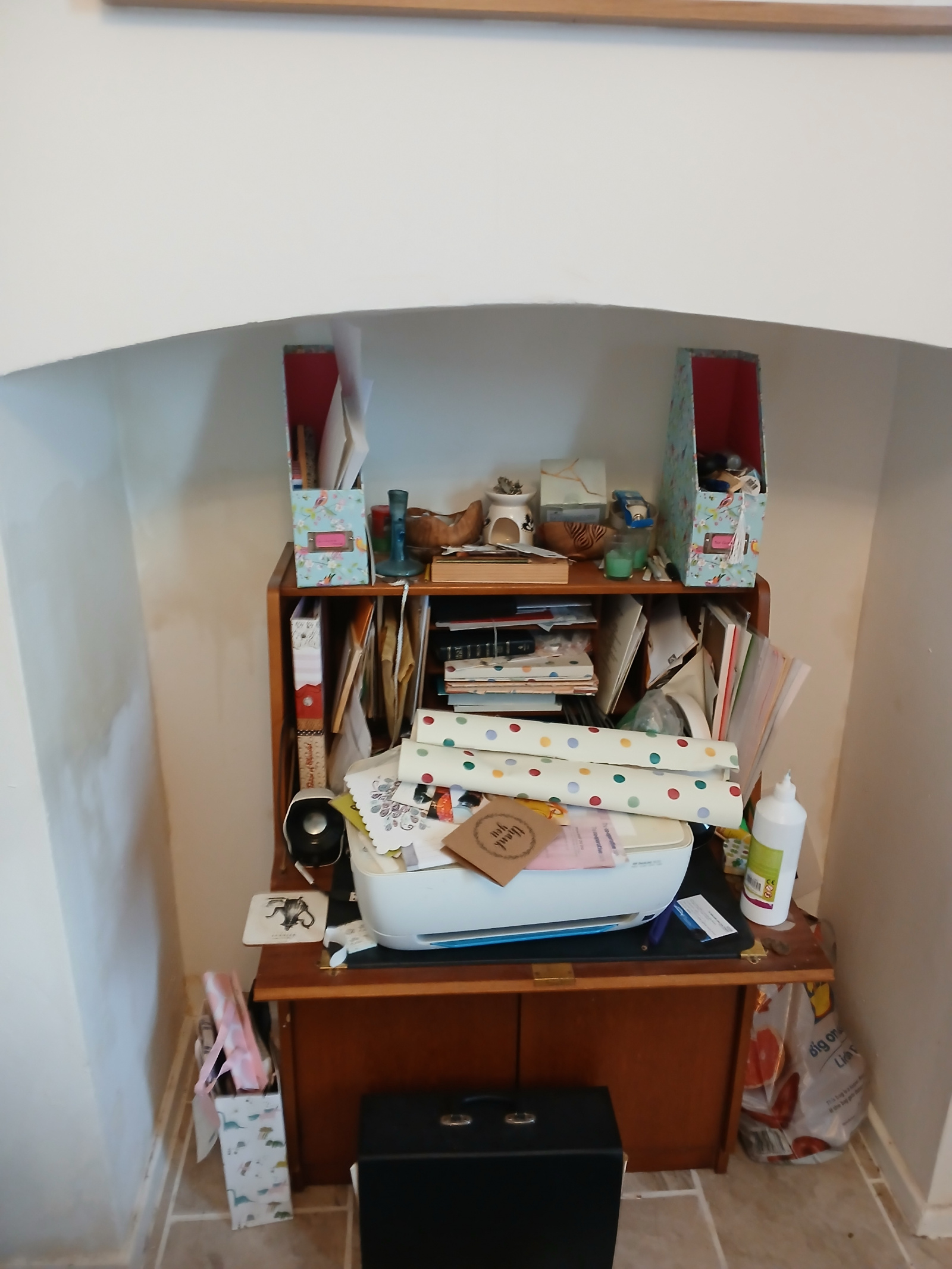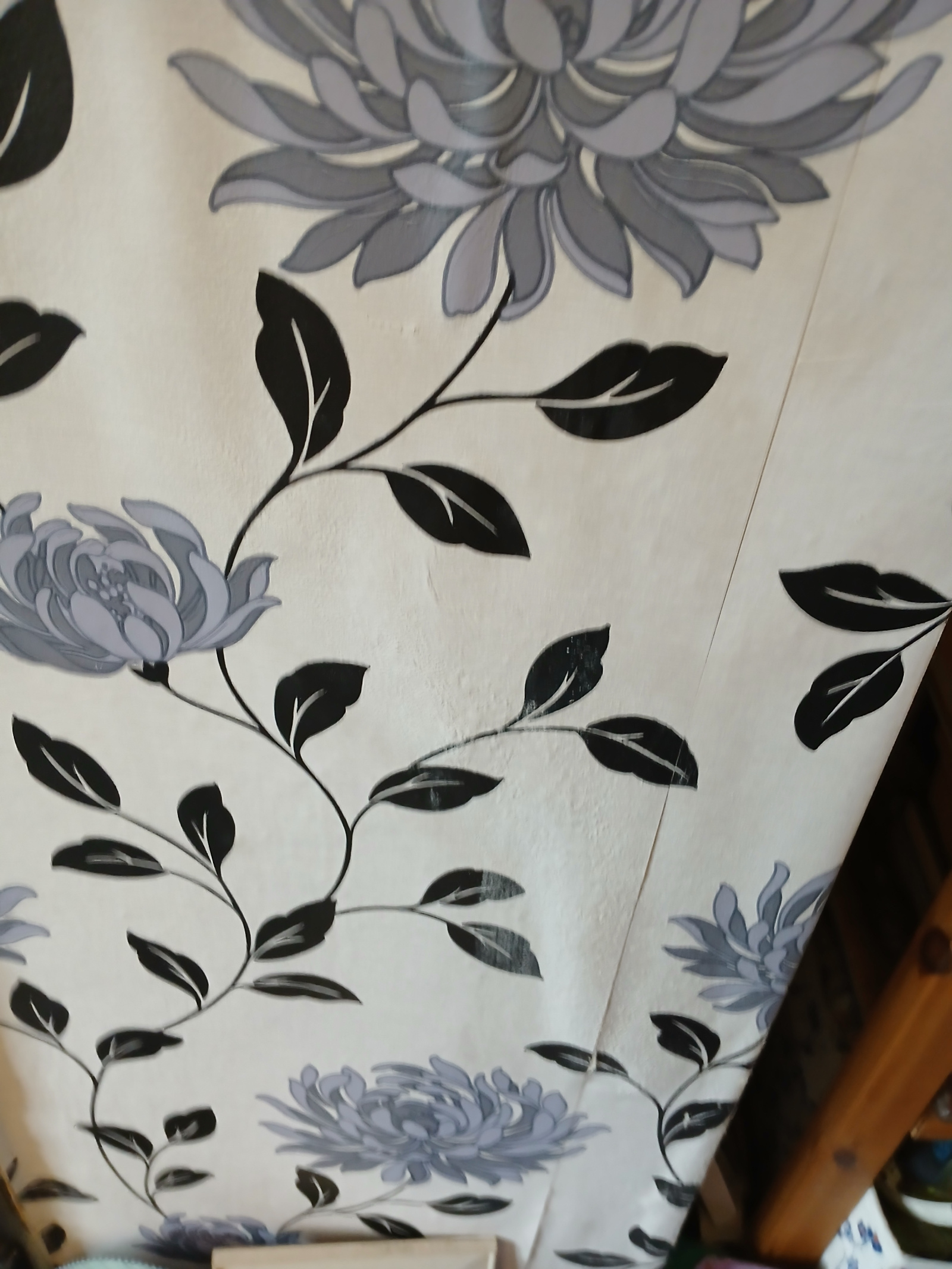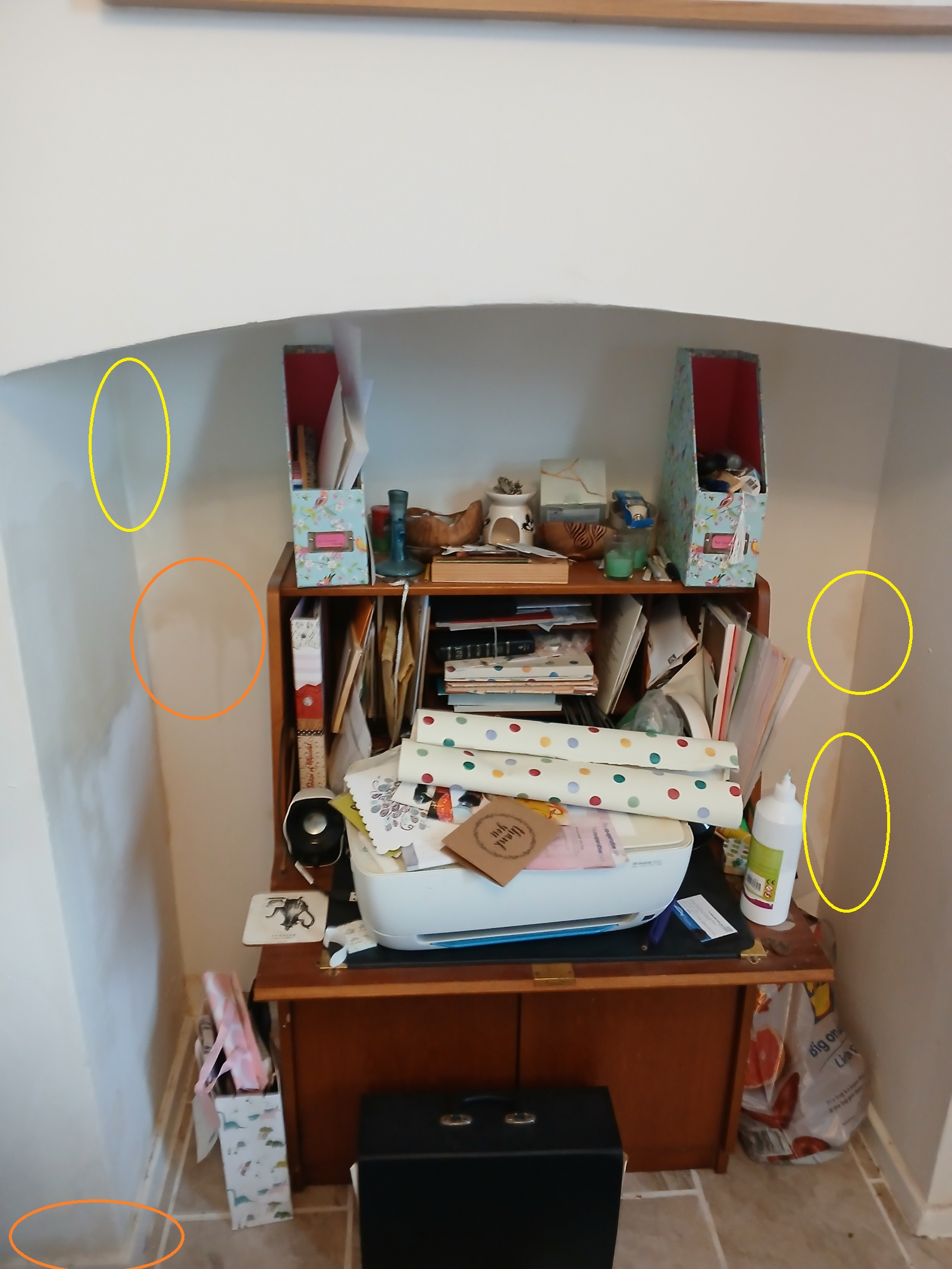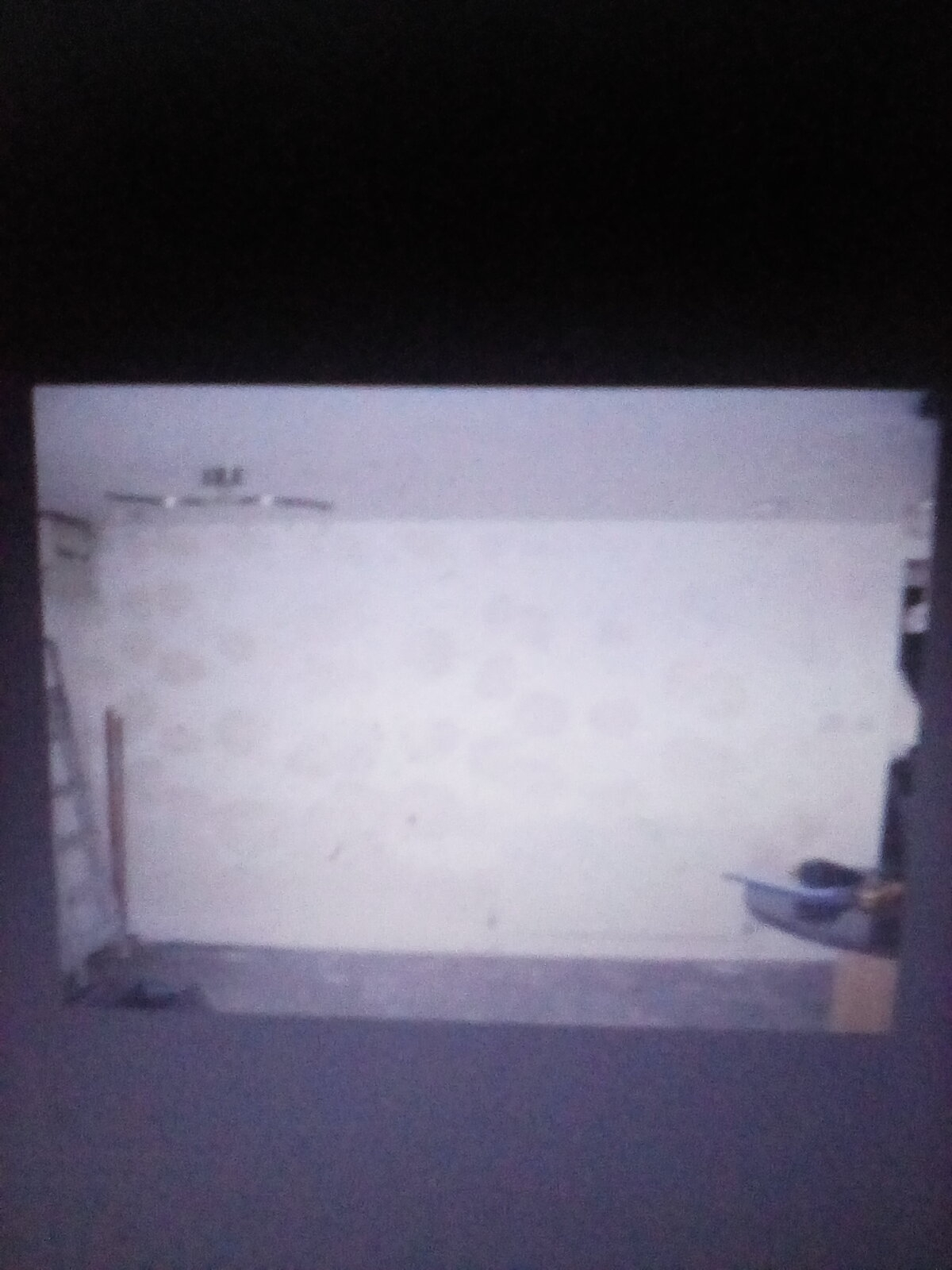We’d like to remind Forumites to please avoid political debate on the Forum.
This is to keep it a safe and useful space for MoneySaving discussions. Threads that are – or become – political in nature may be removed in line with the Forum’s rules. Thank you for your understanding.
📨 Have you signed up to the Forum's new Email Digest yet? Get a selection of trending threads sent straight to your inbox daily, weekly or monthly!
Damp help please
rosamy52
Posts: 100 Forumite




Hi all,
I’m hoping the hive mind might be able to help please. I’ve lived in my current house just over four years, it’s a two bed former miners house with living room and dining room downstairs with a kitchen extension added maybe 20 years ago. The downstairs on both chimney breast walls, two separate chimneys, has damp and has had since I moved in. The living room chimney breast wall is wallpapered and parts are peeling away which they were a bit when I moved in, that chimney has a working fireplace though I’ve never used it. The dining room fireplace was taken out at some point and blocked up, possibly when the kitchen extension was done as the flooring is the same and makes sense that work was done at the same time. I’ve mentioned the damp several times and the agent has put it in their reports. Now the landlord is doing something about it, he’s a decent guy I think and an electrician by trade. He came to look at it the other day, said he would talk to a builder/roofer friend about it but that he’ll probably put a vent in the ceiling of the little archway where the dining room fire used be. There are vents in both bedroom walls upstairs. However that doesn’t solve the issue in the living room.
Does anyone know about damp and what the best or even possible solutions might be please? Ignore my horrendously messy desk please, you can see the damp stains all around it.




0
Comments
-
Hi. Sorry you have a damp issue in your house. There is a very helpful Facebook group on older properties. You would need to join but they really know their stuff and save people loads of money by avoiding making expensive mistakes in trying to tackle damp the wrong way. https://www.facebook.com/groups/youroldhouseuk/ The Society for the protection of ancient buildings also provides many helpful factsheets and guidance notes on dealing with older properties. https://www.spab.org.uk/advice/search-our-knowledgebase?category_type=73&keywords=Damp1
-
Thanks Green_hopeful, I'll have a look. Thankfully it's not my responsibility to solve as I'm a tenant and haven't caused the damp which the landlord knows and is happy with, I'm just a bit confused about his solution and whether it'll work or not especially as it doesn't seem to involve the living room. It could cause a fair amount of disruption and so I want to make sure it's a decent idea and to understand it more.Green_hopeful said:Hi. Sorry you have a damp issue in your house. There is a very helpful Facebook group on older properties. You would need to join but they really know their stuff and save people loads of money by avoiding making expensive mistakes in trying to tackle damp the wrong way. https://www.facebook.com/groups/youroldhouseuk/ The Society for the protection of ancient buildings also provides many helpful factsheets and guidance notes on dealing with older properties. https://www.spab.org.uk/advice/search-our-knowledgebase?category_type=73&keywords=Damp
0 -
Are you doing the obvious things to not make the problem worse, i.e. not drying washing inside, ventilating where possible.
Do you have good extractor fans in bathrooms and the kitchen to remove moisture from cooking and bathing.0 -
I had this exact same problem in my last house ( ex-council house built in the 1930's)
Because it was my own house I just lived with it - plus I used the fireplace so mostly kept it dried out
That house needed a lot of work to modernise so when I sold it was bought by an independent property builder, planning to 'do it up' and sell at a profit.
He 'phoned me a few days after completion when he had started the work to tell me there was, despite the damp course looking fine, rising damp. No idea why he bothered to call me, he bought it without a survey, but that was the problem he then had to deal with1 -
Hi Rosamy.
'Rising' damp rises from the ground, so I'd expect most of the evidence to be at low level, showing itself just above the skirting boards. There's also a general limit to how far it can creep upwards using, presumably, capillary action, and some of yours is right up there, so I'd be hesitant in blaming 'rising', tho' it can't be discounted.
Then there's 'condensation', which is where excessive air moisture condenses out on the coldest surfaces in the home, usually exterior wall and windows. That wall is 'party', I presume, so is unlikely to be anywhere close to the coldest in that room?
Q - do you have any other 'condensation' issues, such as windows running with droplets in the mornings? If not, I don't think I'd be looking at this as a cause either, and the stains also suggest the damp is coming through from behind. Yes, being in an alcove and having a desk in front of it will reduce ventilating air-flow, but still I'd be hesitant to blame cond in this case.
That effectively leaves 'penetrating' or water ingress as the other possible cause. Again unlikely from behind, since it's a party wall and unlikely to have plumbing pipes, so that points to the chimney as the source.
A blocked-off flue like yours is prone to such issues, if it isn't ventilated. Moist air from the room can pass through the wall, upstairs and down, and condense inside that empty chimney void, and it then trickles down, coming through wherever it can as stains.
I opened up, as a feature, an old fireplace in our kitchen, and re-blocked off the top using p'board, in which I fitted a light shining down. Also capped off the chimney top using slate, and mounted a pot on top for looks. I'd known about potential issues from this, but, hey, really? - it's sealed at both ends! Some time later, I'd hear the odd 'drip', and presumably small bits of soot falling on the p'board. Looked up at the p'board, and it was stained yellow... Unsealed the flue top, put a ventilating pepperpot on it, and fitted a small grill in the fireplace roof - problem stopped.
So, yes, I suspect that's your issue!
It could also be water ingress from, say, poor flashing around the stack, or even the pot - rain can seep in and make its way down, percolating through the bricks and inside and around the old flue pipe, before coming through where it can.
So, the vent is an obvious good move, but the chimney pot also needs to be open, but rain-capped - is it? The vent only needs to 'trickle', so don't worry about it sucking too much nice warm air out.
I presume the builder will also look at the roof where the stack comes through, and around the pot, for example?1 -
Chimneys are areas that often have damp issues. Years of burning fossil fuels has left the brickwork and plaster full of hygroscopic salts, which will attract condensation in places above the dew point, so internal walls like party walls can still be damp.1
-
The most effective way of sorting out damp from a blocked up fireplace is to open up the fireplace to introduce airflow. You currently have a enclosed chimney which has had years of fires which would have kept it dry.
Now its blocked the products of combustion (soot etc) from those fires are absorbing moisture which then affects the external surface.
My sister looked at a holiday flat with the same problem. The conversion had been done a year before and this involved removing a chimney stack and reroofing, leaving the chimney breasts in place which were showing signs of damp.0 -
And on top of that, the bricks may well have absorbed tar deposits from all that smoke which are now slowly leaching out.stuart45 said:Chimneys are areas that often have damp issues. Years of burning fossil fuels has left the brickwork and plaster full of hygroscopic salts, which will attract condensation in places above the dew point, so internal walls like party walls can still be damp.
Any language construct that forces such insanity in this case should be abandoned without regrets. –
Erik Aronesty, 2014
Treasure the moments that you have. Savour them for as long as you can for they will never come back again.0 -
Seeing the bigger picture on my PC, most of these stains are very clearly not surface condensation, and not rising - they are 'penetrating', but which I mean it's caused by 'actual' water, either from cond forming inside the chimney cavity, or rain getting through from above.
 The two yellow circles on the right corner show very distinctive water penetration patches - no way is that from the surface, but from behind, and focused. And they are not stained. Almost certainly actual clean water = rain.The top-left yellow circle indicates that this water is coming from above, and is likely only showing itself in that recess as it's the first easy place it can come through and be visible.Bottom-left orange circle seems to indicate some possible 'rising', but that ain't the major problem here.The sheer extensiveness of the stains here, coupled with the focused damp patches, is, I think, pointing to actual rainwater coming in. I'd therefore hope they'd be checking the flashing, pots, rain cowl, pointing, whatevs, as well as adding a vent.
The two yellow circles on the right corner show very distinctive water penetration patches - no way is that from the surface, but from behind, and focused. And they are not stained. Almost certainly actual clean water = rain.The top-left yellow circle indicates that this water is coming from above, and is likely only showing itself in that recess as it's the first easy place it can come through and be visible.Bottom-left orange circle seems to indicate some possible 'rising', but that ain't the major problem here.The sheer extensiveness of the stains here, coupled with the focused damp patches, is, I think, pointing to actual rainwater coming in. I'd therefore hope they'd be checking the flashing, pots, rain cowl, pointing, whatevs, as well as adding a vent.
1 -
Hygroscopic salts can leave staining and damp spots like that around chimneys, although penetrating damp is also a possibility.
This is an internal wall where salts soaked through the dabs, on a job I was on.
1
Confirm your email address to Create Threads and Reply

Categories
- All Categories
- 352.9K Banking & Borrowing
- 253.9K Reduce Debt & Boost Income
- 454.7K Spending & Discounts
- 246K Work, Benefits & Business
- 602K Mortgages, Homes & Bills
- 177.8K Life & Family
- 259.9K Travel & Transport
- 1.5M Hobbies & Leisure
- 16K Discuss & Feedback
- 37.7K Read-Only Boards




